Print Layout
An Object's print layout can be found by opening the object, expanding the Print Layouts node, and selecting a layout to open it. If multiple languages are used for an application, a selection of languages for the Print Layout will be displayed. The window view that is displayed is the Paint menu, in which the layout can be designed. Non-visual changes made to one of these language versions of the layout automatically get applied to other versions. For graphical layouts it is also possible to select Total Page Layout to view all layouts at the same time.
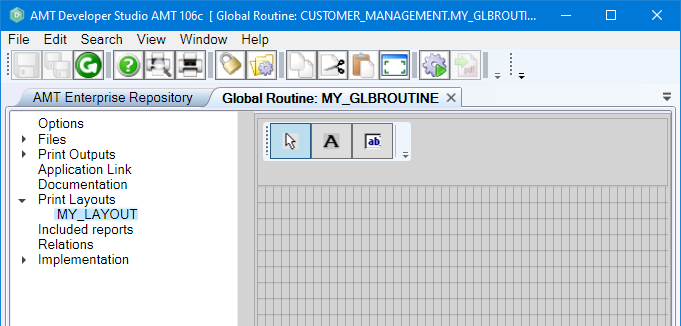 |
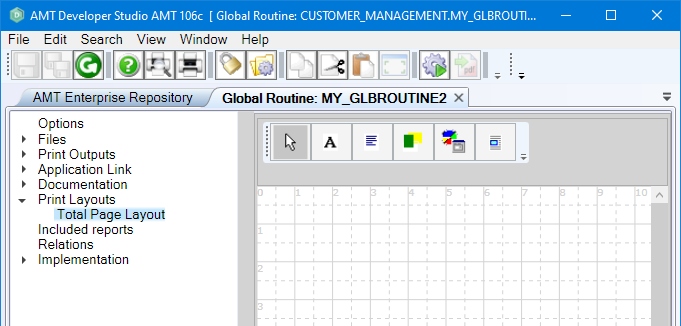
|
| A text print layout | A graphical print layout |
With the Total Page Layout selected, using the Left Mouse Button anywhere in the Paint view of a graphical print layout reveals its properties as shown in the image below.

If an object in the layout is
selected, the properties of the selected object become visible and can be edited in the object
inspector. The properties of objects can also be altered in
code in the Implementation view. Visit the Object Inspector page for more information.
The properties of objects in a text print layout differ from properties found in a graphical print layout due to limitations in printing purely text.
Layout Objects
To begin placing an object, first select an object type from the Toolbar.
 |
 |
|
| The toolbar found in a text layout | The toolbar found in a graphical layout |
Available objects in a text print layout are:
Available objects in a graphical print layout are:
Click anywhere in the paint window to place the selected object.
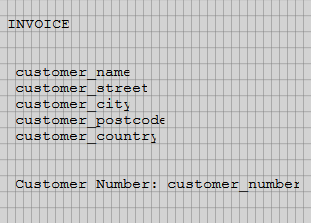 |
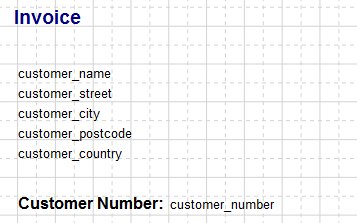 |
| Objects placed in a text print layout | Objects placed in a graphical print layout |
Selection & Alignment
Select an already existing object from the Paint view to configure it in the Object Inspector, or select and drag the object to move it around.
To make a selection of multiple objects, hold the Ctrl key and individually select
multiple objects to
manipulate several objects at the same time.
Alternatively, hold the Ctrl key and
the Left Mouse Button, then drag the cursor to make a selection of multiple
objects.
Press the Delete key to delete the selected object(s), or alternatively press the right mouse button and select Delete from the context menu.
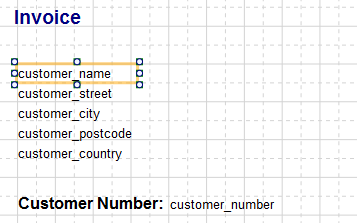 |
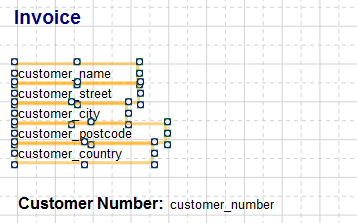 |
| A single selected object | Multiple selected objects |
Selected objects can be aligned by using the Align tool, which can be opened using the F4 key.
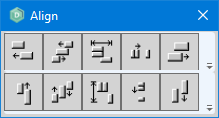
The
following images show an example of misaligned objects becoming aligned using the Align tool:
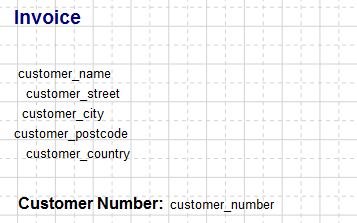 |
 |
| Misaligned objects | Aligned objects |
See the Aligning Visual Objects page for more
information.
Object Layering
Objects can overlap one another in graphical print layouts. To control which object is on top or below, use the context menu by using the Right Mouse Button on the object and selecting then selecting Send to back or Bring to front to place an object behind others, or in front of others, respectively.
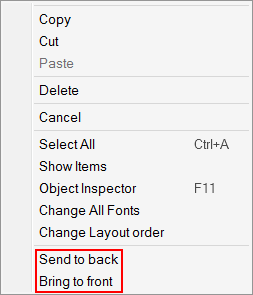
Alternatively, the ZOrder
property of an object can be changed manually in the Object Inspector.
Show Items
Navigating the context menu and selecting Show Items displays the Items view. This view lists all objects in a layout and the properties of each object. The Object Inspector opens after selecting an object, in which the object can be edited the same way as in the Paint view.

